 |
| Oliver Edwards Heptagenid nymph, a staple fly for me in the past. |
 |
| Oliver Edwards Baetis nymph, still regularly used to deadly effect. |
It was when watching the urban fly fishing DVD produced by Fish On productions, that I came across JP's caddis pupa. Without realising, I had been tying it slightly differently as I had been tying the hackle behind the bead rather than behind the thorax. This is certainly down to me not paying enough attention to the pattern on the video, although I have purposely changed the ribbing, abdomen and thorax to different materials - very much a variant - it is essentially the same fly and it's effectiveness definitely hasn't been diminished by these small changes.
 |
| My variant of JP's pupa, the hackle tied in the right place, behind the thorax. |
 |
| The JP Pupa has caught me three barbel this year, this first time I have caught this species on the fly. |
The versatility of this fly is further demonstrated by the many different ways you can use it. I have successfully targeted sighted fish, generally casting upstream and to one side of the visible fish. The plop of the fly landing alerts the fish to its presence - so don't worry too much if the fly lands off course - often this results in an immediate inspection, and with luck an immediate take. You can imagine what happens if that scenario doesn't unfold, a flat refusal to engage, the trout then becomes suspicious and any repeated casts causing the fish to flee. Of course the JP pupa is not always the right choice, but its effectiveness gives confidence that the majority of times it will catch you that fish. Be mindful about the size of fly and tungsten bead; if you use it to deceive sighted fish, a lighter bead is beneficial in the slower, smoother surfaced waters.
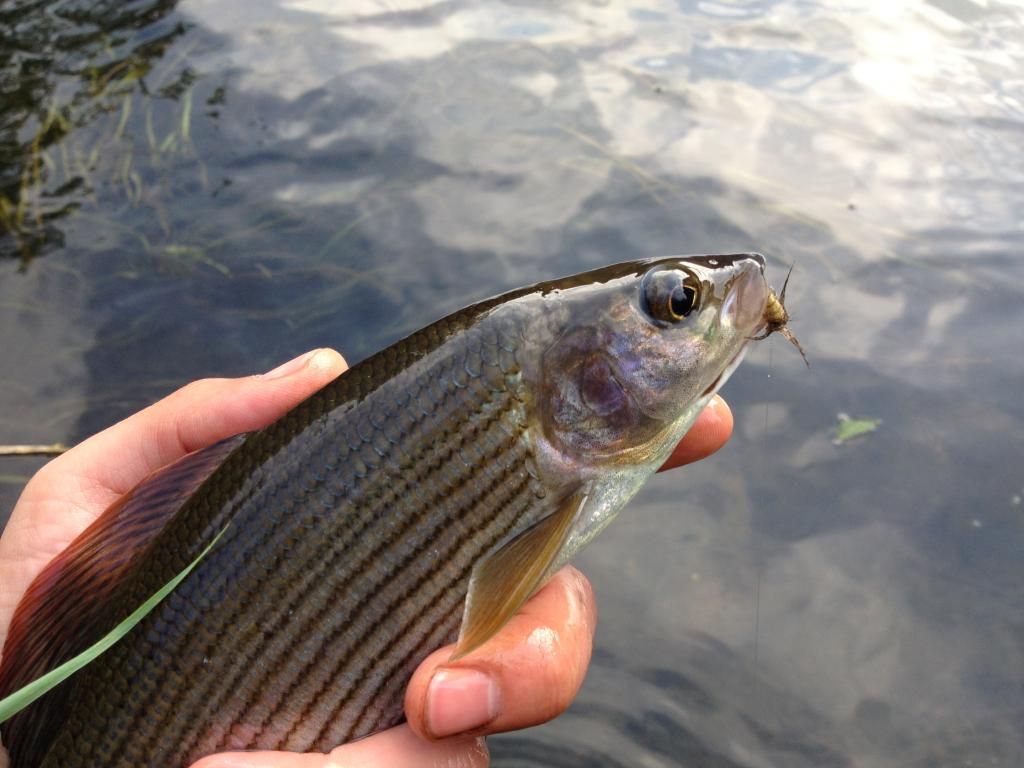 |
| Another grayling succumbs to the charms of the JP pupa |
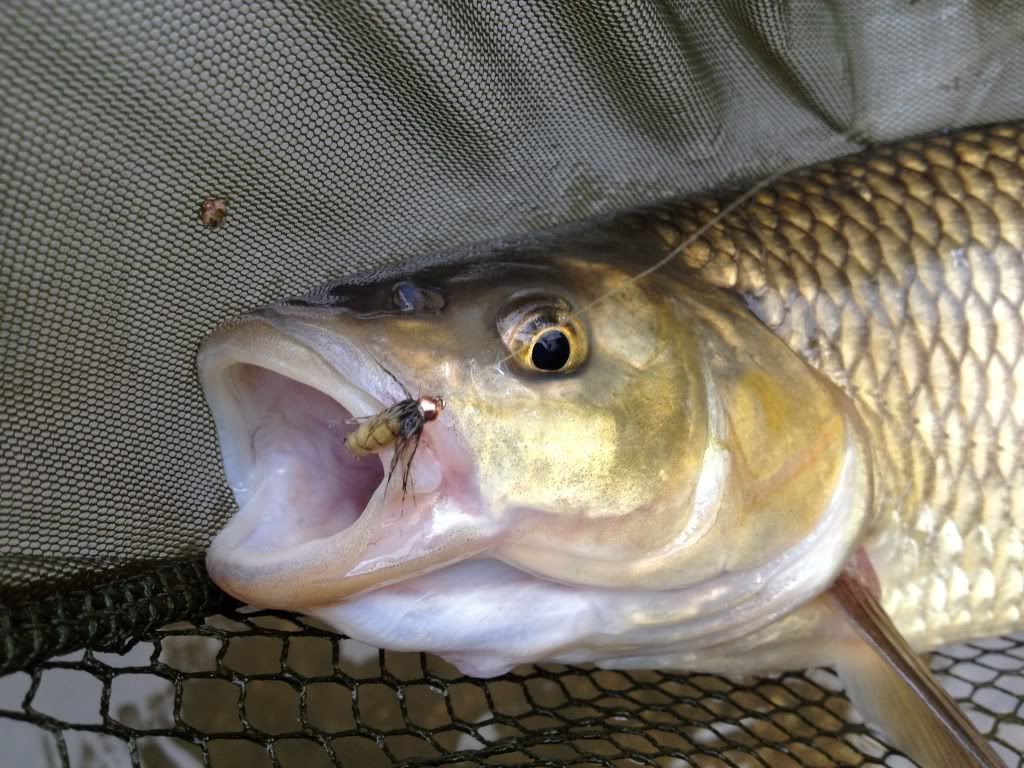 |
| A plump chub, no other fly has caught me such a diverse number of species. |
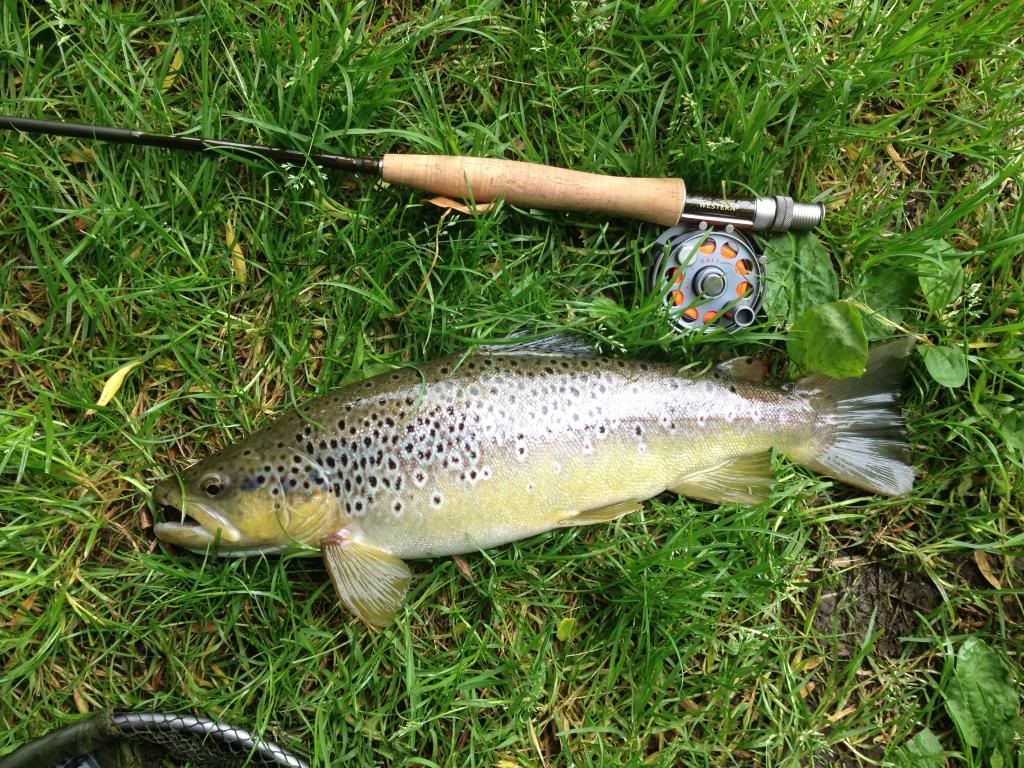 |
| This smashing 18" trout was caught on the JP pupa fished with a french leader. |
 |
| A selection of pre-tied hooks with a floss under-body. |
Take a ready prepared grub hook; this is a Tiemco 2487. You can of course start the fly as a blank hook and bead. Tie on the thread - I'm using UTC70 - securely tie down the wire rib. This is 0.20mm coloured copper wire, equivalent to UTC brassie sized wire.
Once the rib is securely tied in, apply the dubbing to the thread - I use Fly-Rite poly dubbing, the colour is no, 25 cream variant.
Because of the floss under-body you won't need so much dubbing to give the right shape.
Wind the rib in evenly spaced turns.
Prepare a brown speckled partridge feather and tie in by the tip.
Wind the partridge hackle where the abdomen ends; you normally only get a couple of turns.
Dub a good quantity of squirrel dubbing - this is fox squirrel but grey will work just as well. Ensure you have a good mix of guard hair and underfur, I pluck the fur straight of the hide.
Wind the dubbing to create a thick thorax and tie off with a whip-finish or a few half-hitches
Once finished give the fly a good rough-up with a piece of velcro or tailor made dubbing brush to give the fly an enticing scruffy look.

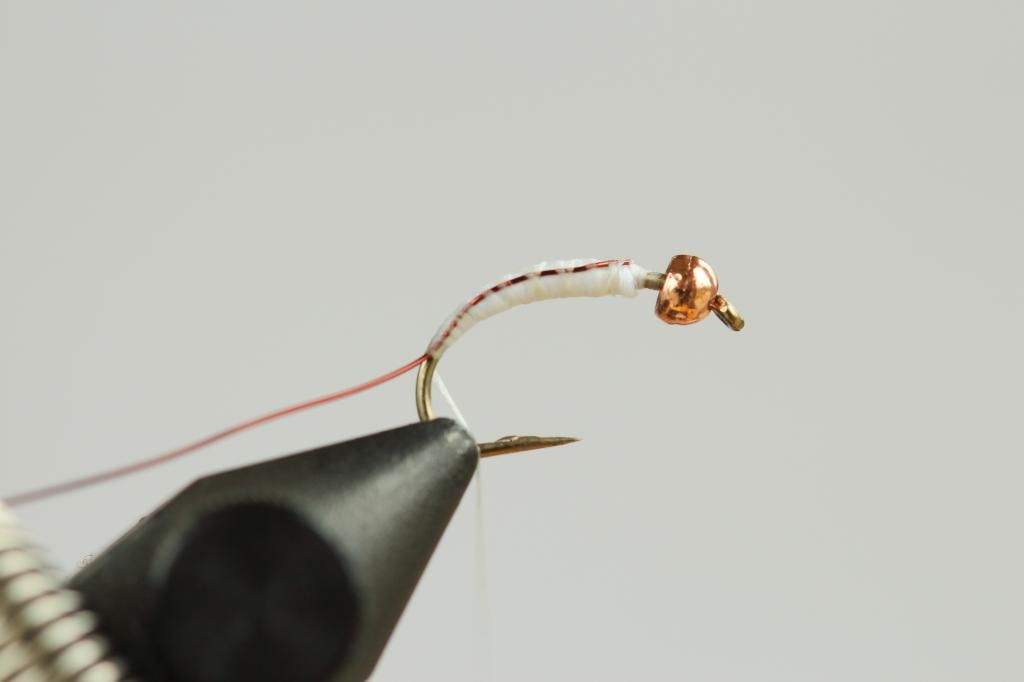

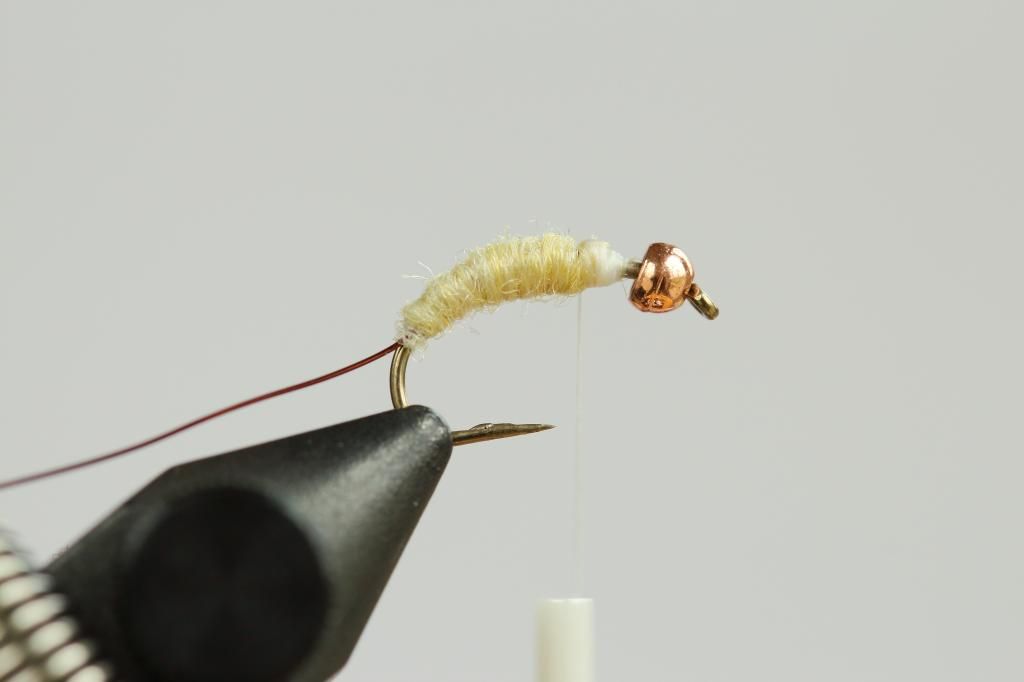
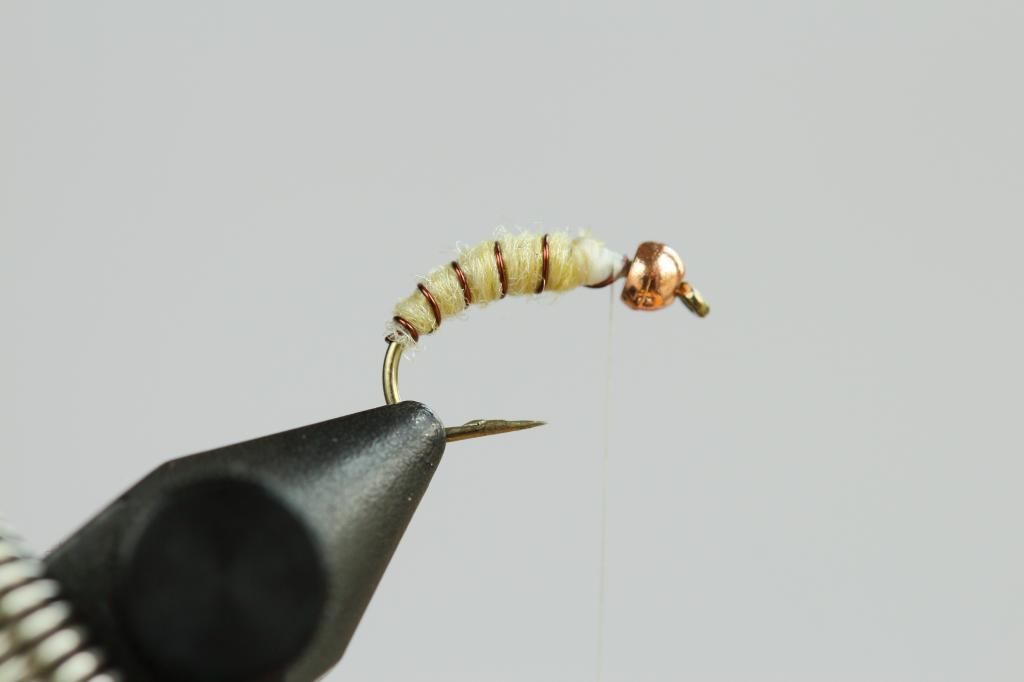

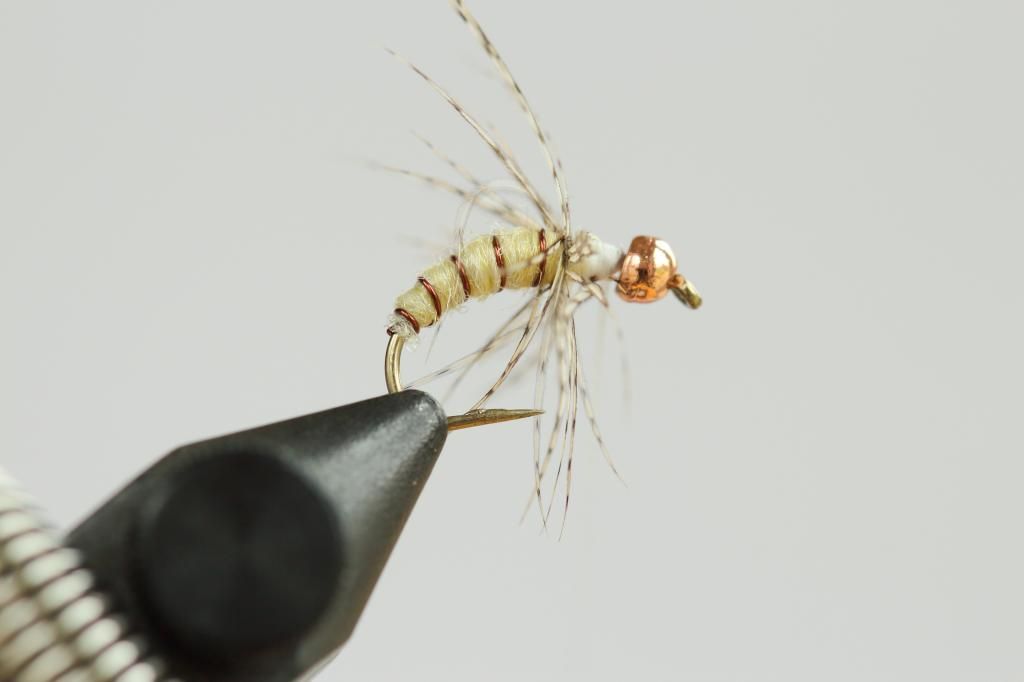

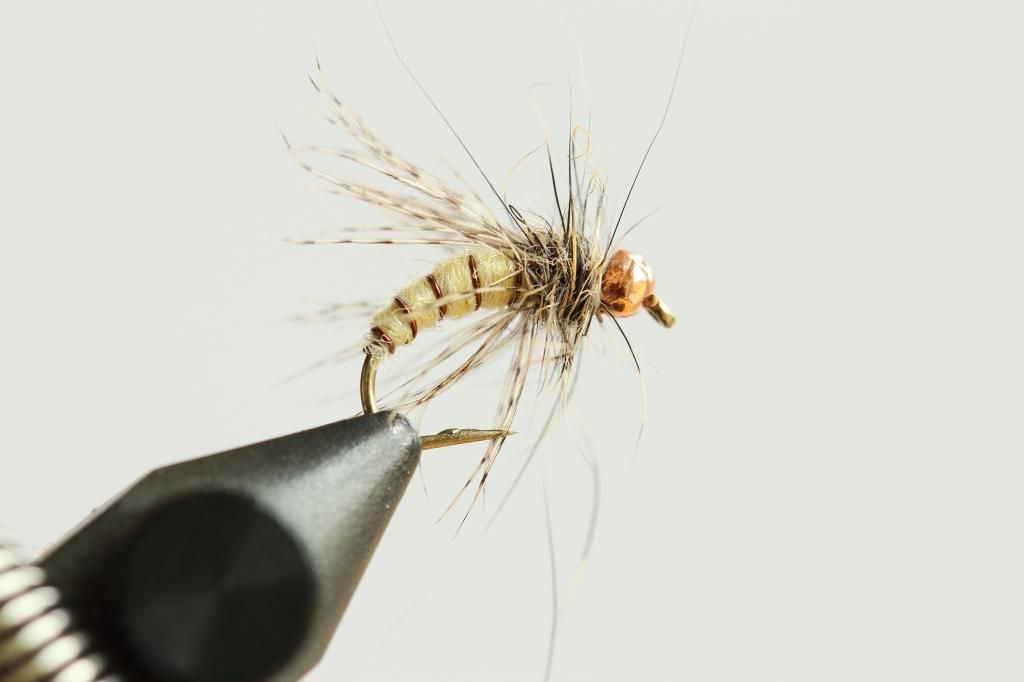
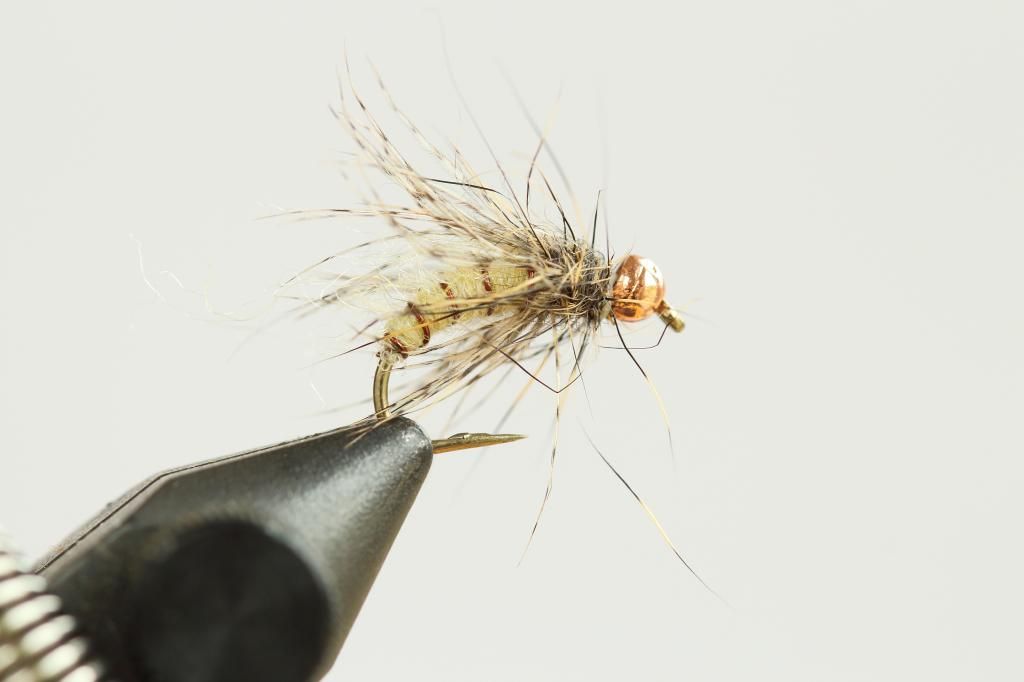
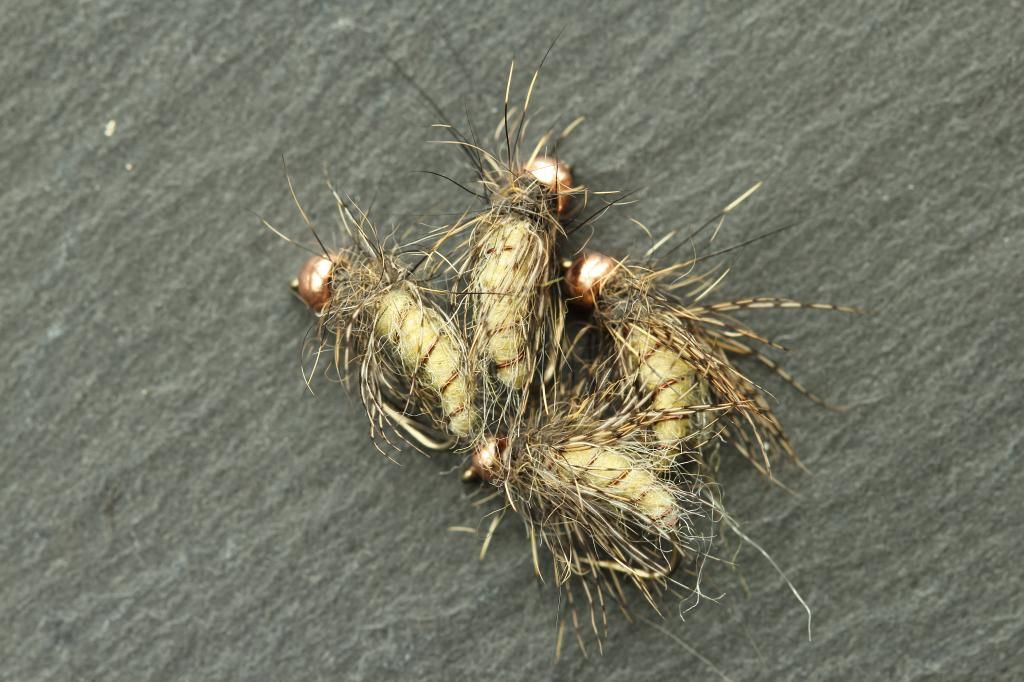

lovely tying as always Ben and some cracking fish, well done mate.
ReplyDeleteThanks George, it really is an awesome fly, give it a go.
Delete